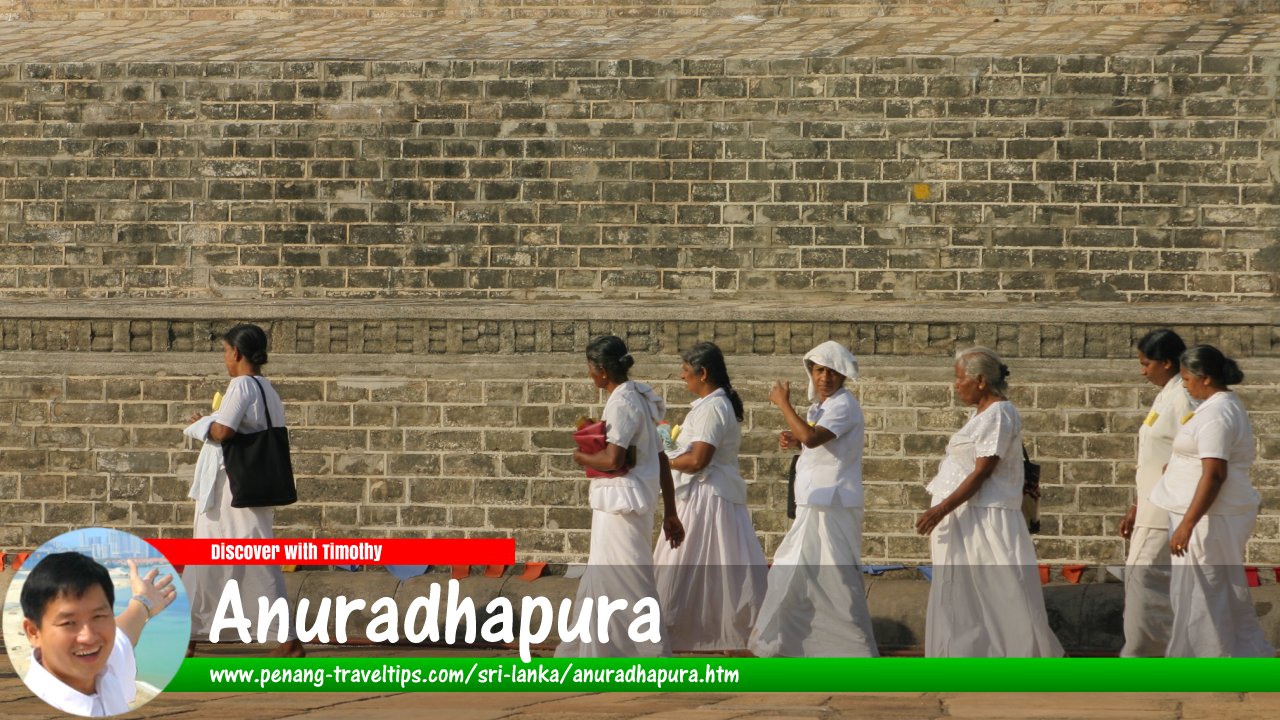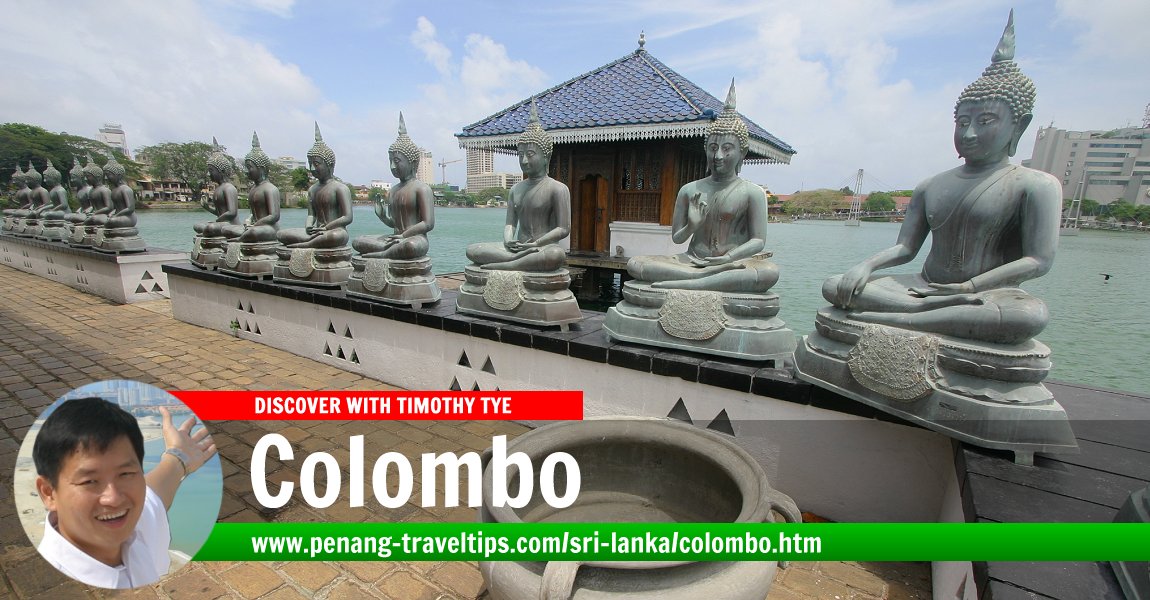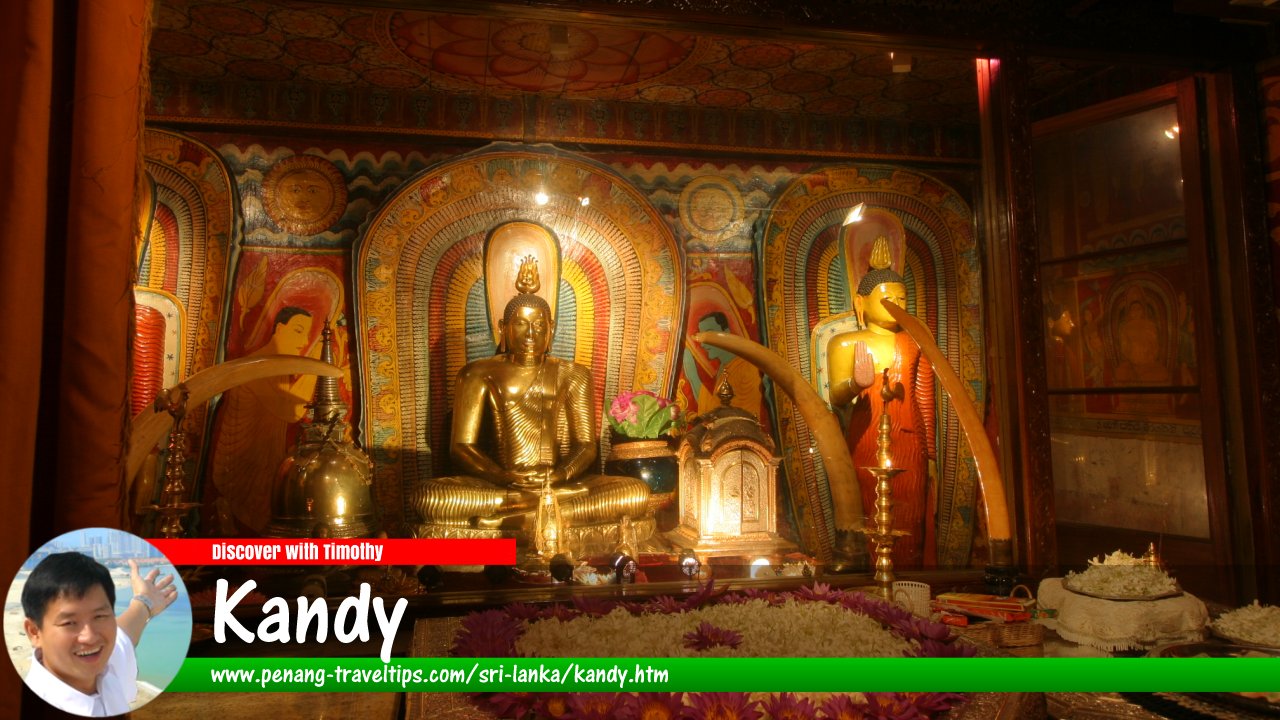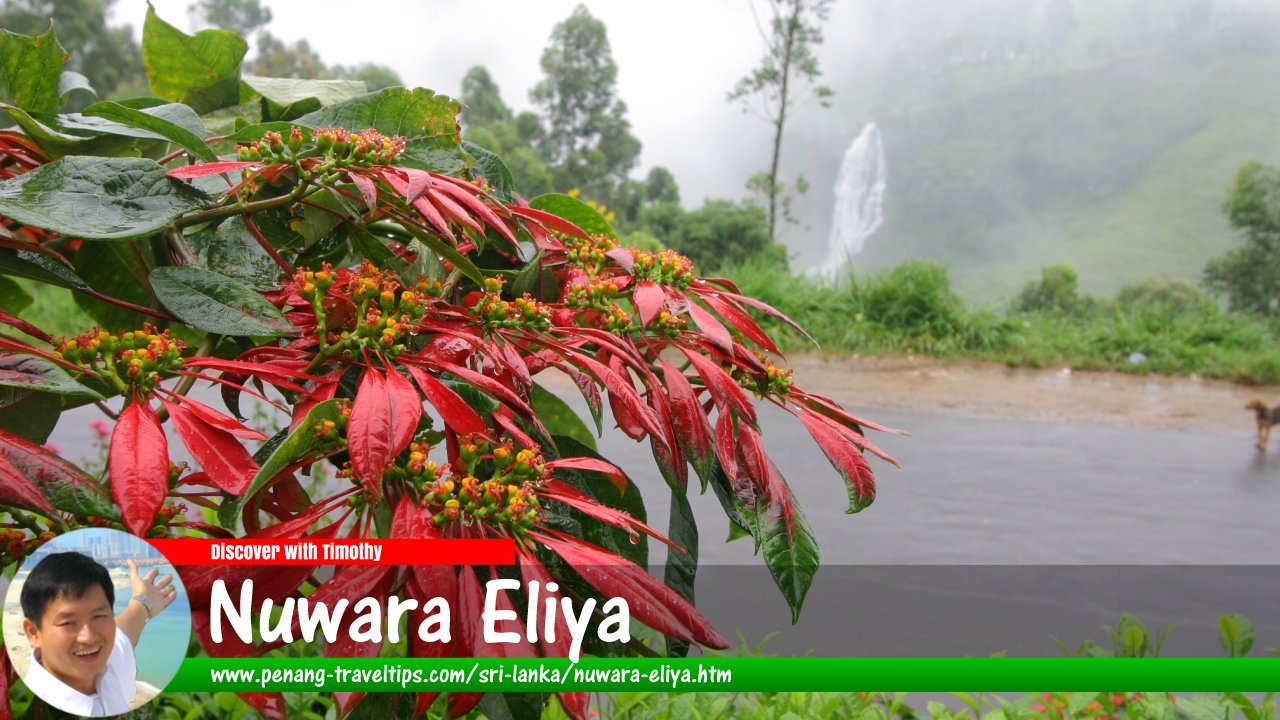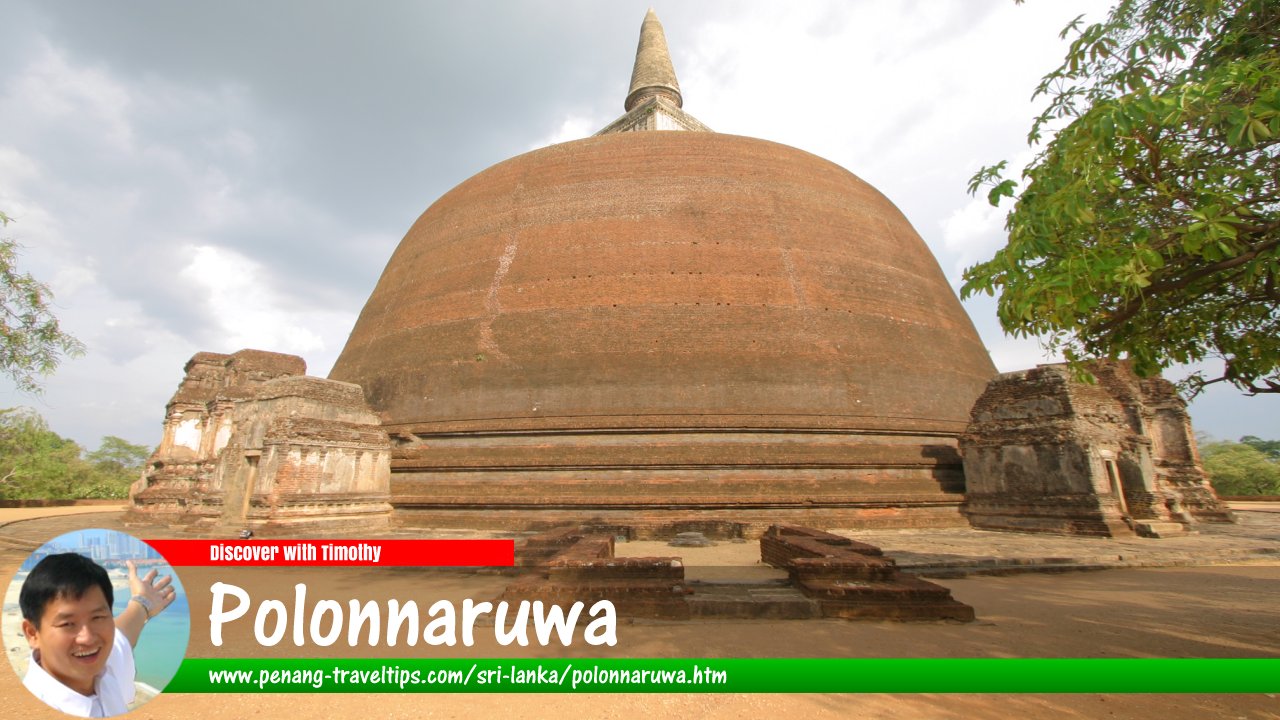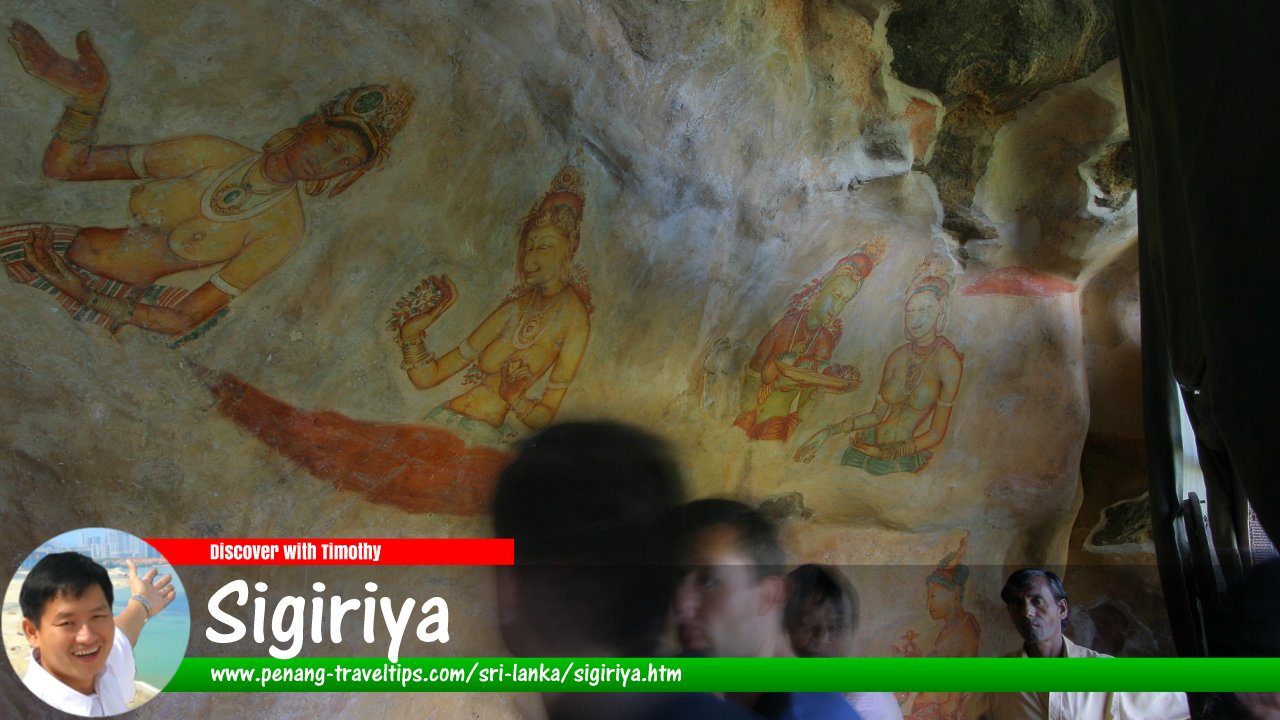 Ancient wall murals at Sigiriya, Sri Lanka (29 August 2005)
Ancient wall murals at Sigiriya, Sri Lanka (29 August 2005)
Sigiriya (GPS: 7.95175, 80.75582; Sinhala: සීගිරිය) is a major archeological site in. It was made a World Heritage Site by UNESCO in 1982, under the title "Ancient City of Sigiriya, preserving the ruins of an ancient palace complex built during the reign of King Kasyapa (477 – 495 AD). The most distinctive landmark within the ancient palace grounds is the amazing Sigiriya Rock, also called Lion Rock, a hardened magma plug from a long extinct and eroded volcano. It looms out over the plains.
Standing tall over the surrounding plains, Sigiriya Rock offers splended views for miles in all directions. Sigiriya Rock lies on a steep mound that rises over the otherwise flat plains, and is itself a further 370 meters tall. The rock is sheer on all sides, and in many parts even overhangs the base. From the top, it is elliptical in plan. Its top is flat, and slopes gradually along the elliptical axis.
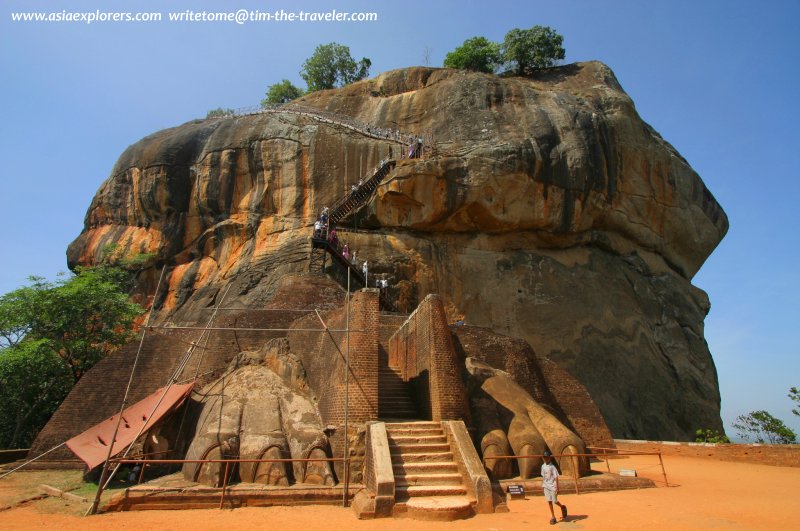 Lion's Rock, Sigiriya (29 August, 2005)
Lion's Rock, Sigiriya (29 August, 2005)
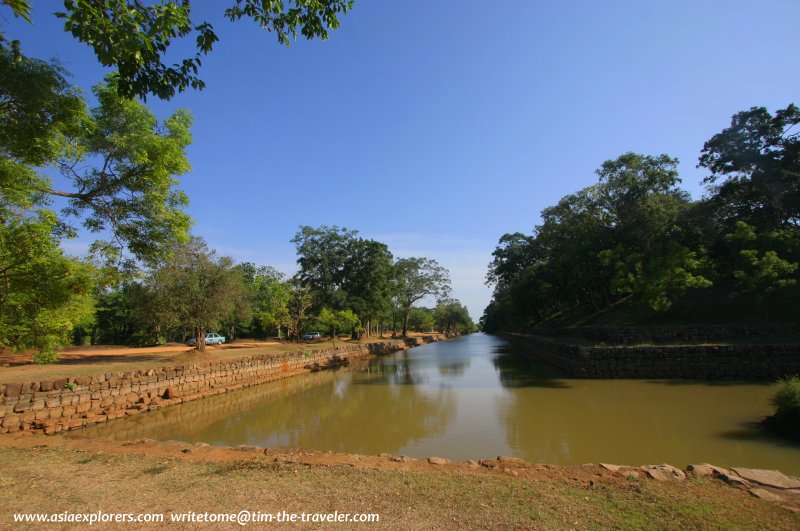 King Kasyapa's moat, Sigiriya (29 August, 2005)
King Kasyapa's moat, Sigiriya (29 August, 2005)
Members of AsiaExplorers explored Sigiriya Rock as part of our tour of Sri Lanka. We spent about two hours here, as it takes a while to climb the rock right to the top. There is a staircase, but we stopped often to take photographs of the marvellous vista unfolding before us.
Location of Sigiriya on map
Getting there
Sigiriya is located in Matale District, in the Central Province of Sri Lanka. You can reach it by taking a bus from Dambulla 25 km away. There is one bus every half an hour with the last one leaving Sigiriya for Dambulla at 6:00 pm. You can also take the tuk tuk between Dambulla and Sigiriya.Entrance fee to the World Heritage Sited is 3600 LKR or US$30. It takes at least two hours to fully explore the ruins.
Archeological Remains at Sigiriya
The ancient king's Upper Palace is located at the flat top of Sigiriya Rock. On the middle terrace is the Lion Gate and the Mirror Wall, with its frescoes. The king's Lower Palace clings to the slopes below the rock. The moats, walls and gardens of the palace extend for a few hundreds meters from the base of the rock.The king built his residence here to function not only as a palace, but also as fortress. The engineering ingenuity and creativity required to create this landmark still impress today's visitors. On the Upper Palace, for example, one finds cisterns cut into the rock to retain water.
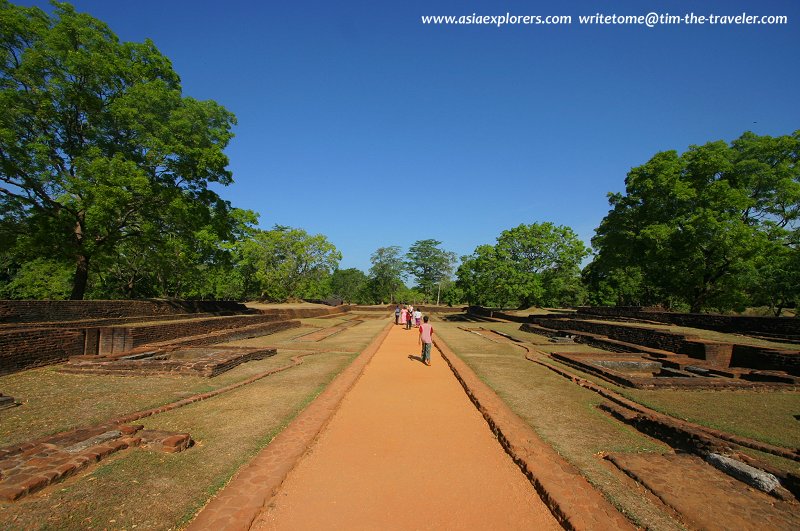 Ruins of King Kasyapa's Lower Palace, Sigiriya (29 August, 2005)
Ruins of King Kasyapa's Lower Palace, Sigiriya (29 August, 2005)
The History Of Sigiriya
Sigiriya Rock may have been in use since prehistoric times. It was already a rock-shelter monastery from about the 3rd century BC. The caves within it were prepared and donated by devotees. Later King Kasyapa built the garden and palace around it. After King Kasyapa died, Sigiriya reverted to monastic use up till the 14th century, when it was finally abandoned, and was only rediscovered in 1907 by British Explorer John Still.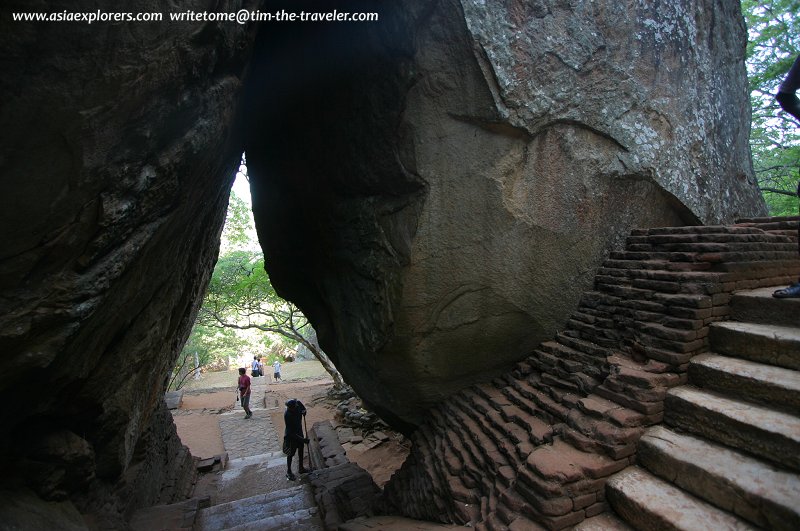 Ascending Sigiriya (29 August, 2005)
Ascending Sigiriya (29 August, 2005)
The Legend of Sigiriya
According to the Mahavamsa, the ancient historical record of Sri Lanka, there was once a king called, Kasyapa, the son of King Dhatusena. Kasyapa murdered his father by walling him alive and then usurping the throne which rightfully belonged to his elder brother Mogallana. Mogallana escaped Kasyapa's assassination attempt by fleeing to India. In India Mogallana raised an army with the intention of returning and retaking the throne of Sri Lanka. Knowing that Mogallana will return one day, Kasyapa built his palace on the summit of Sigiriya Rock as a fortress as well as a pleasure palace.In AD 495, eighteen years afer Kasyapa seized power, Mogallana returned and declared war. At the heat of the battle, Kasyapa's elephant turned aside sensing a hidden swamp. His army though he was retreating, so they backed away, leaving him stranded. Rather than be captured, Kasyapa committed suicide by turning his sword on himself (legend said he beheaded himself). Moggallana returned the capital to Anuradapura and Sigiriya reverted into a monastery complex.
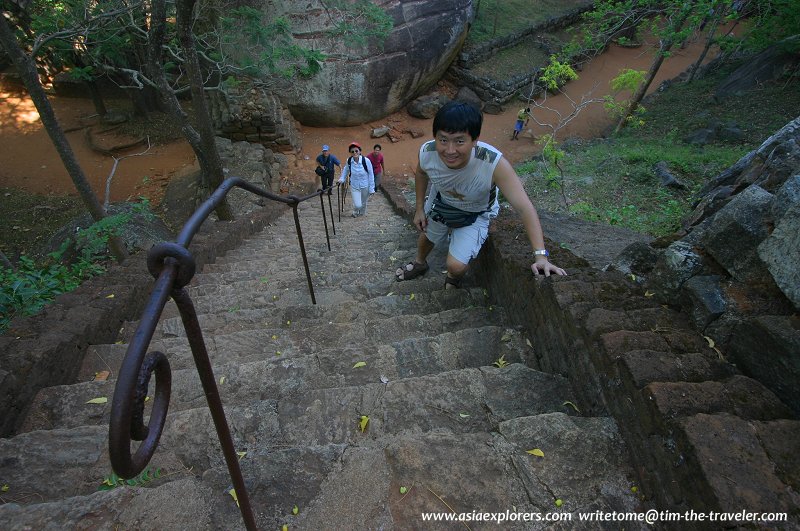 Stone staircase at Sigiriya (29 August, 2005)
Stone staircase at Sigiriya (29 August, 2005)
The irony of this story is that had King Kassyapa remained within the high walls of Sigiriya Rock, Mogallana would have never been able to defeat him. Some people believe that the years of waiting for an invasion had driven Kassyapa over the edge, or that Kasyapa developed a guilty consoncience over what he had done and wanted to fight his brother on an equal level. Alternative stories have the primary builder of the palace at Sigiriya Rock as King Dhatusena, with Kasyapa finishing the work in honour of his father. Another story have Kasyapa as a playboy king, with Sigiriya Rock being his pleasure palace. Still, Kasyapa's fate was nowhere less tragic. In some versions, he was assassinated by a concubine, in another he cut his own throat when isolated in his final battle.
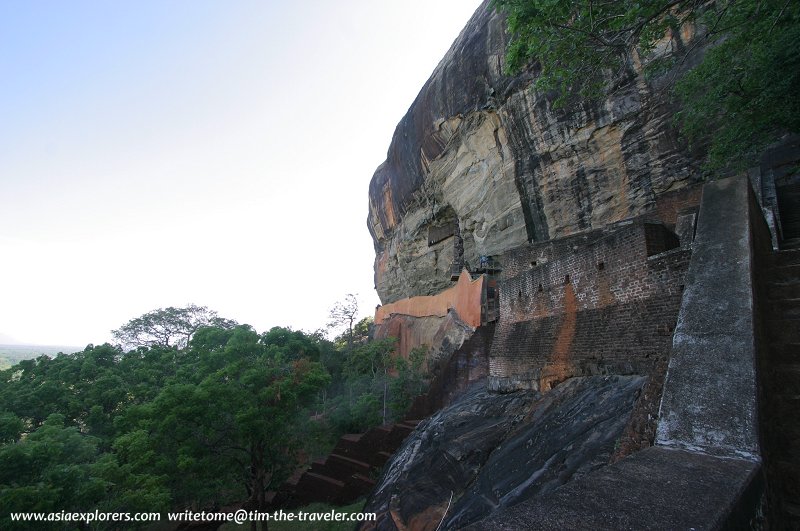 Steps leading up Sigiriya is cut into the sheer wall of the rock. (29 August, 2005)
Steps leading up Sigiriya is cut into the sheer wall of the rock. (29 August, 2005)
Touring Sigiriya
We arrive outside the outer moats of Sigiriya on 29 August. Sigiriya Rock rises above the trees in the mid distance. There were paths through the ruins that lead to the foot of the rock. Stone stairways climb the steep slope at the base of the rock. They wind through the remains of the lower parts of the palace, reaching a terrace that traverses along the lower edge of the vertical face of the rock.The section above this terrace is known as the Mirror Wall. Coated with lime, the wall has been polished to reflect, and some parts of it still does, 1,5000 years after it was built. There are nearly 1,500 pieces of proses on the surface of the Mirror Wall. These poems were written between the 7th and 13th Centuries, and are Sri Lanka's oldest graffiti, for they were composed by ancient visitors.
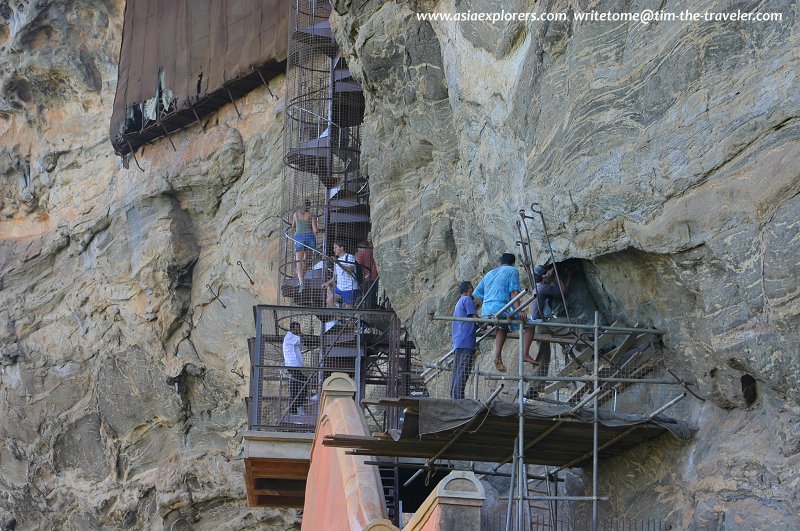 Spiral staircase makes climb easier for modern-day visitors to Sigiriya (29 August, 2005)
Spiral staircase makes climb easier for modern-day visitors to Sigiriya (29 August, 2005)
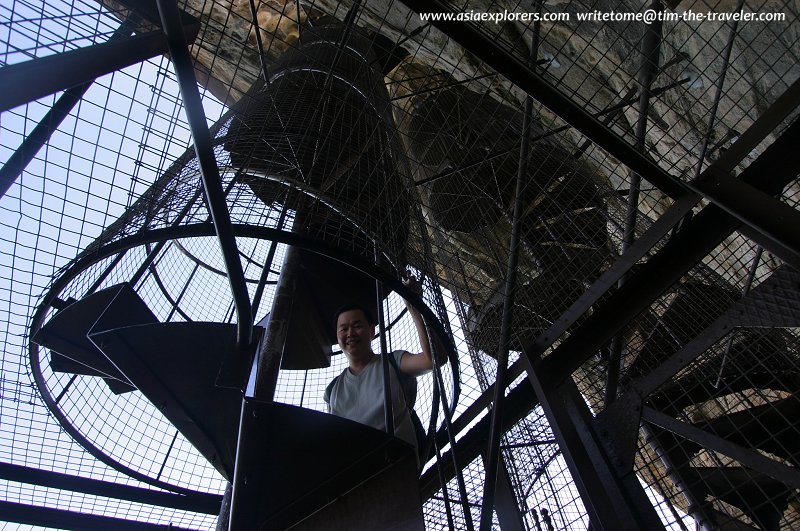 Spiral staircase, Sigiriya (29 August, 2005)
Spiral staircase, Sigiriya (29 August, 2005)
Sigiriya during Kasyapa's reign was not only a fortress but also a haven of pleasure. Among the pictorial art of Sigiriya are frescoes of feminine beauty. Originally these 500-odd paintings cover the precipitous face of Sigiriya rock, forming a huge gallery that covered an area almost twice as large as a football field. Today only 23 survived.
Halfway to the top of Sigiriya Rock is a stopover were visitors can rest and buy refreshments (or in my case, a book or two about Sigiriya). The amazing sight at this stopover point is the Lion's Platform. This is the ruins of two enormous lion's paws - the rest of the giant lion is gone. A flight of stairs leads up between the two paws, originally into the lion's mouth. The surviving paws offer an indication as to the size of the beast.When Kasyapa built this enormous lion statue, he was no doubt claiming his kingship over the Sinhalese - the "lion race".
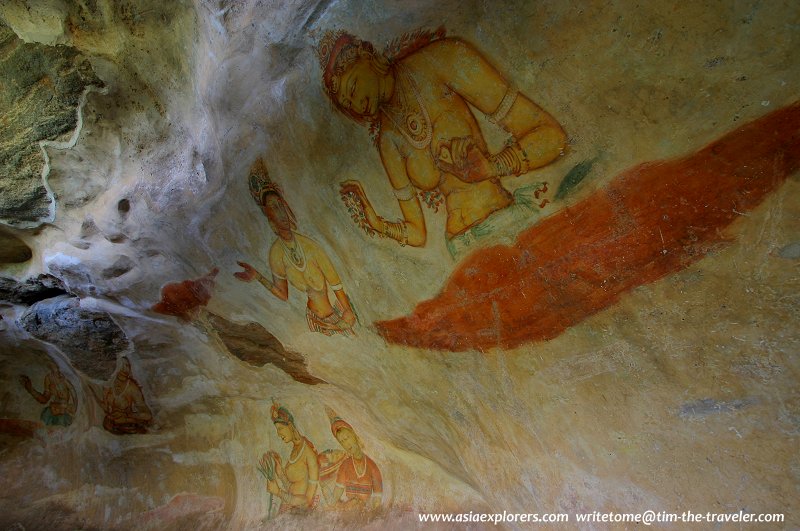 Ancient murals of Sigiriya (29 August, 2005)
Ancient murals of Sigiriya (29 August, 2005)
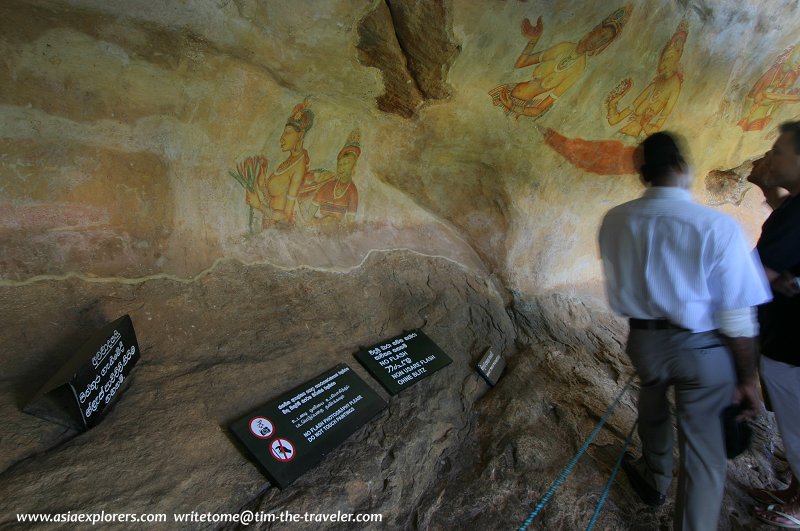 Admiring the murals of Sigiriya (29 August, 2005)
Admiring the murals of Sigiriya (29 August, 2005)
The stairway continues steeply until it reaches the top of Sigiriya Rock. The top is a flat plateau with a gradual incline. Here, we can explore the remnants of Kasyapa's palace, including this throne room. The layout and ground plan of Kasyapa's unique palace is still visible, though the palace itself is long gone. The outer palace occupies the lower eastern sections of the rock, while the inner palace the high western sections. The palace gardens cover the south section, and they all converge at the rock-cut pool. The views from here is simply breathtaking - that's all I can say, but you must come and explore it yourself to find out.
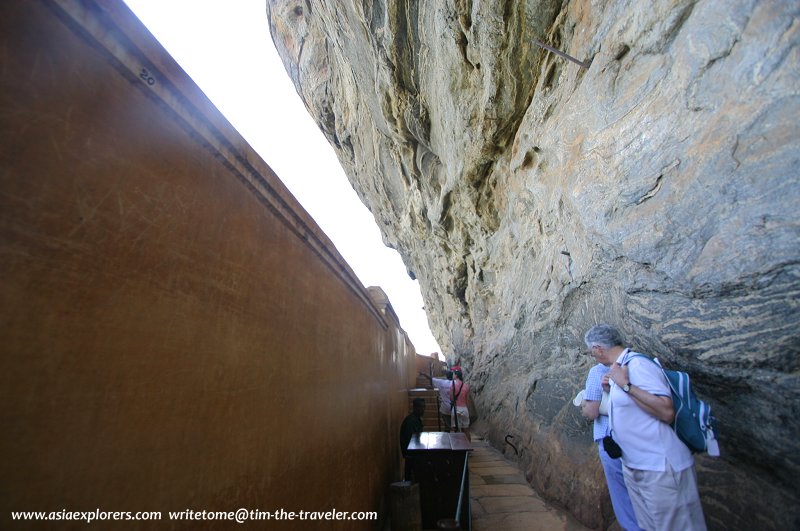 Walled passage at Sigiriya (29 August, 2005)
Walled passage at Sigiriya (29 August, 2005)
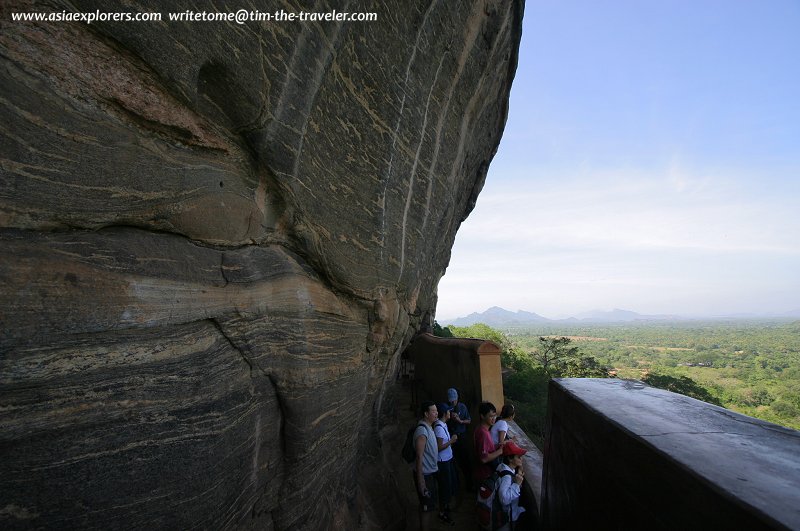 Viewpoint, Sigiriya (29 August, 2005)
Viewpoint, Sigiriya (29 August, 2005)
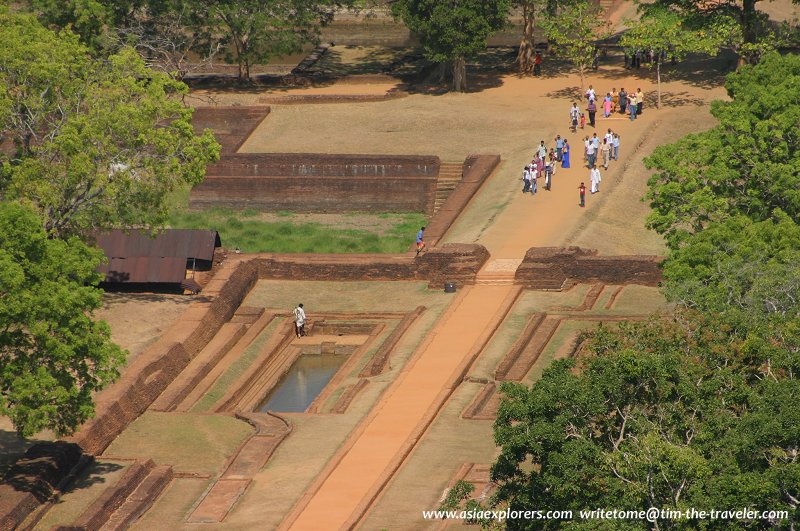 View of the ruins below, Sigiriya (29 August, 2005)
View of the ruins below, Sigiriya (29 August, 2005)
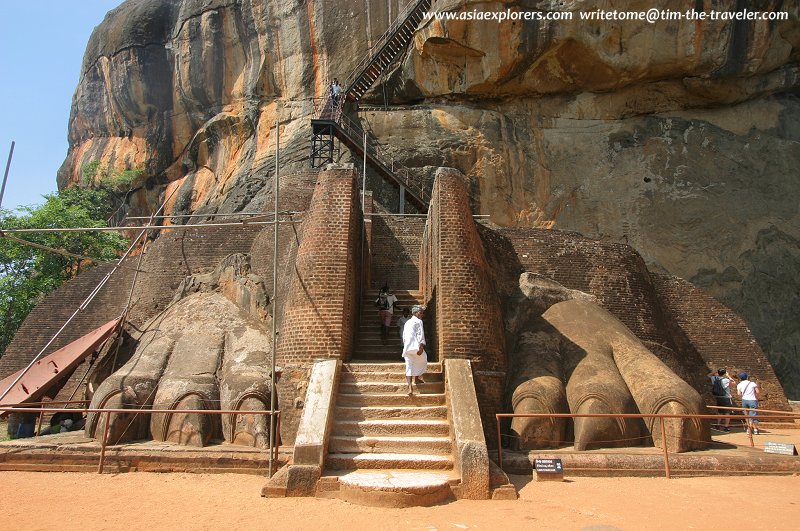 Lion's claws, Sigiriya (29 August, 2005)
Lion's claws, Sigiriya (29 August, 2005)
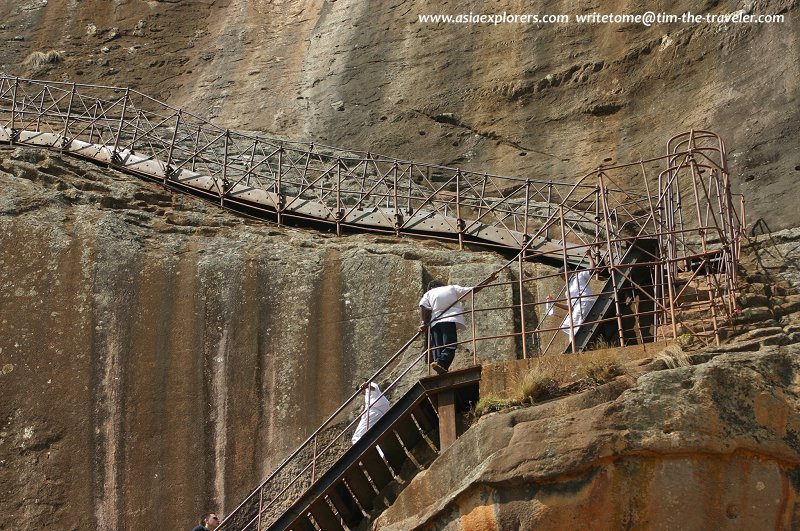 Continuing the journey up Sigiriya (29 August, 2005)
Continuing the journey up Sigiriya (29 August, 2005)
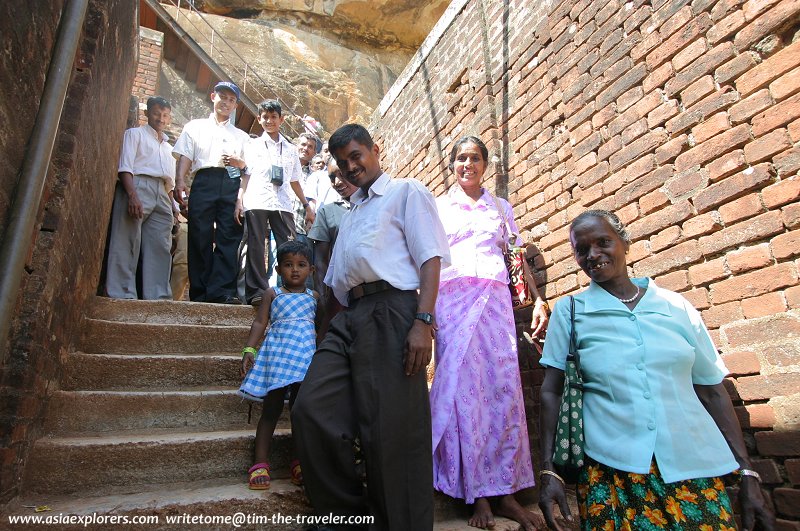 Local visitors to Sigiriya (29 August, 2005)
Local visitors to Sigiriya (29 August, 2005)
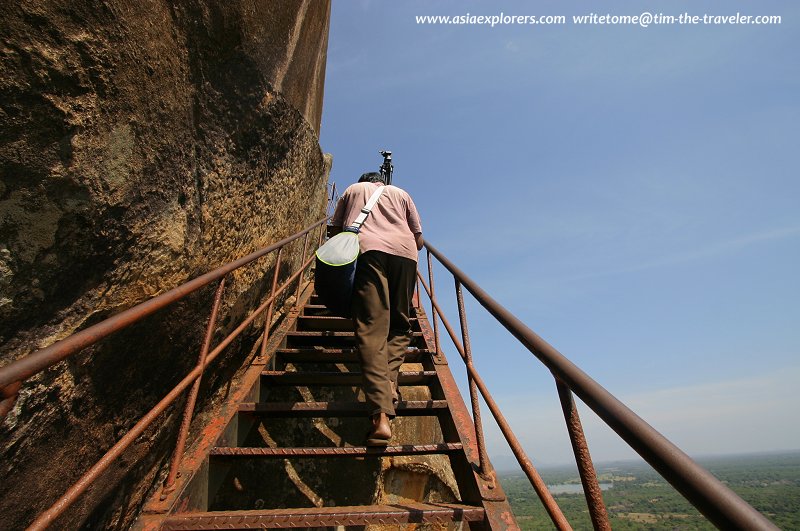 My porter ascending Sigiriya (29 August, 2005)
My porter ascending Sigiriya (29 August, 2005)
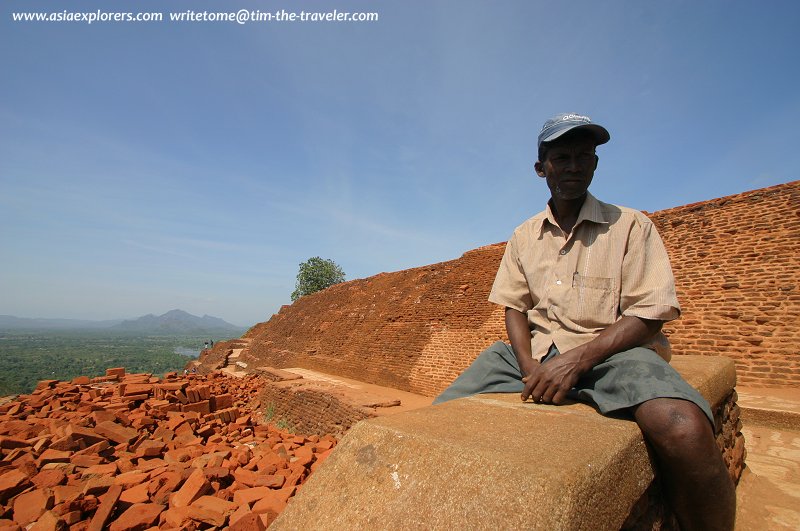 Arriving at the summit of Sigiriya (29 August, 2005)
Arriving at the summit of Sigiriya (29 August, 2005)
 Summit ruins at Sigiriya (29 August, 2005)
Summit ruins at Sigiriya (29 August, 2005)
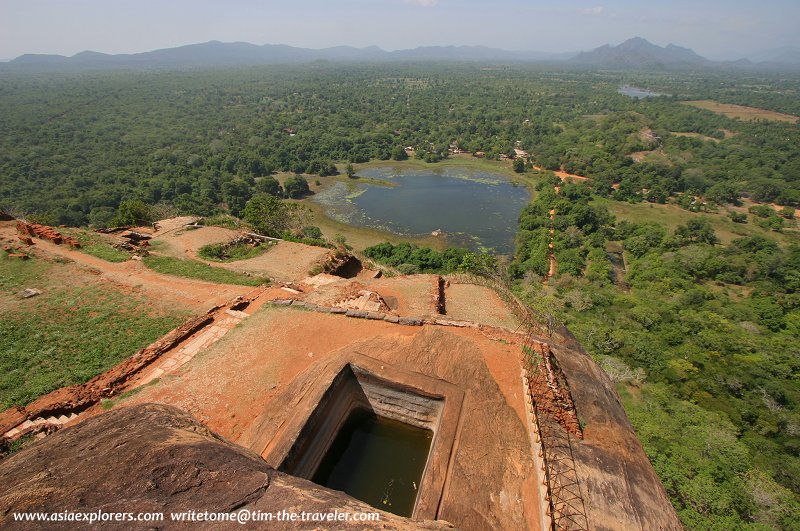 Panoramic view at Sigiriya (29 August, 2005)
Panoramic view at Sigiriya (29 August, 2005)
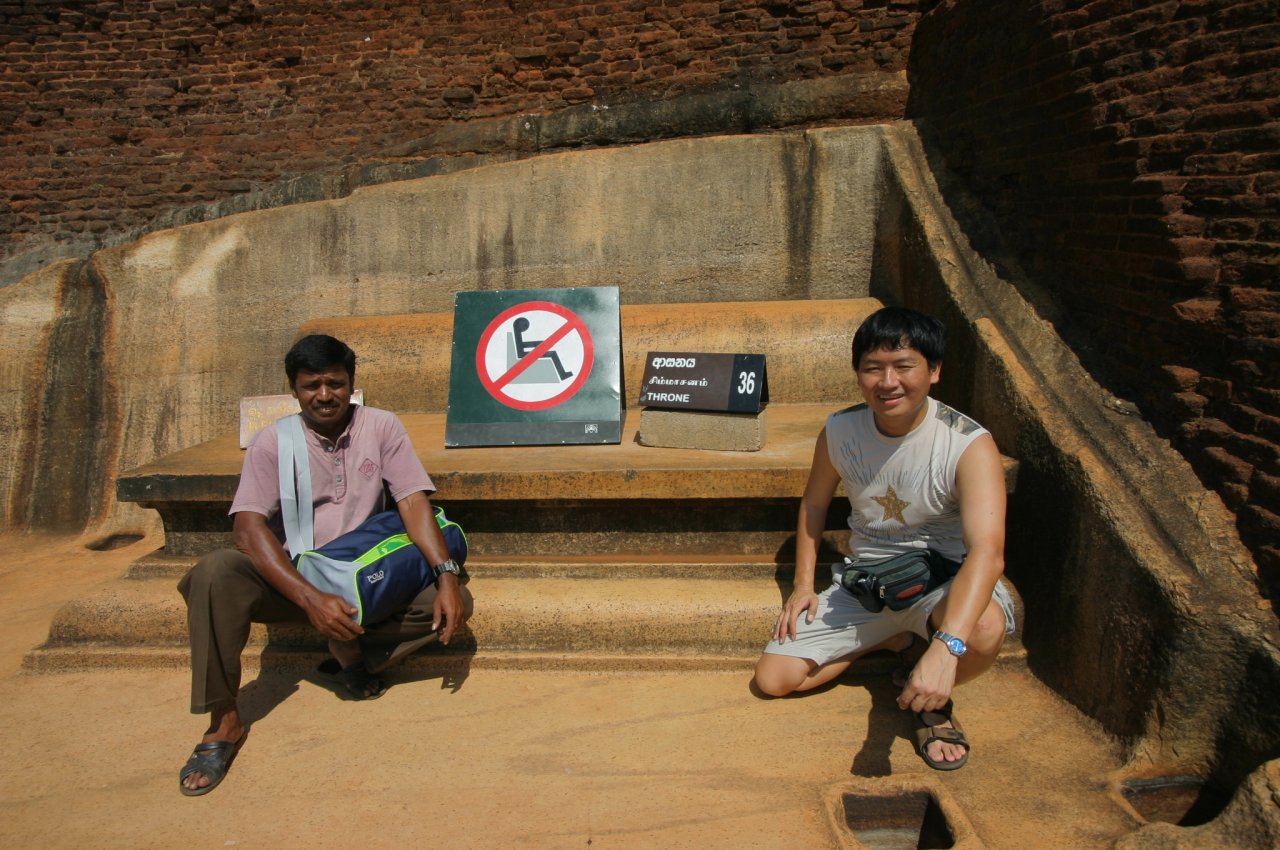 My porter and I, at the throne seat in Sigiriya, Sri Lanka (29 August 2005)
My porter and I, at the throne seat in Sigiriya, Sri Lanka (29 August 2005)
 Latest updates on Penang Travel Tips
Latest updates on Penang Travel Tips
 Destination Sri Lanka
Destination Sri Lanka
Major Tourist Attractions of Sri Lanka

Copyright © 2003-2025 Timothy Tye. All Rights Reserved.

 Go Back
Go Back